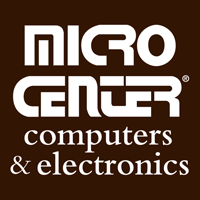- Joined
- Jan 27, 2015
- Messages
- 1,900 (0.50/day)
| System Name | Legion |
|---|---|
| Processor | i7-12700KF |
| Motherboard | Asus Z690-Plus TUF Gaming WiFi D5 |
| Cooling | Arctic Liquid Freezer 2 240mm AIO |
| Memory | PNY MAKO DDR5-6000 C36-36-36-76 |
| Video Card(s) | PowerColor Hellhound 6700 XT 12GB |
| Storage | WD SN770 512GB m.2, Samsung 980 Pro m.2 2TB |
| Display(s) | Acer K272HUL 1440p / 34" MSI MAG341CQ 3440x1440 |
| Case | Montech Air X |
| Power Supply | Corsair CX750M |
| Mouse | Logitech MX Anywhere 25 |
| Keyboard | Logitech MX Keys |
| Software | Lots |
Going to 2nd what was said about Microcenter, they have the 10600K for $189 and the 10700K for $249. There's nothing in the sub $300 price range that can touch that price/perf.
The problem I see is what is in stock *in Houston* for motherboards, At the lower end they are ASRock motherboards, or B460 type boards which will nerf the 10600K and 10700K by limiting memory speed.
I would not buy any of the sub $240 motherboards in stock in Houston, the first one I see worth anything is the AORUS elite at $239 (or $219 after $20 combo savings).
So what I would recommend is -
Pick up the Z590 MSI Z590-A Pro for $189 at Newegg ($179 if you send in rebate card) and the CPU from MC. This board is not super high end but it does have one very nice feature - a USB 3.2 2x2 aka thunderbolt port.
OR
Wait for a better motherboard to be available in Houston to make the combo. OFC the problem here is that they may stop the sale before a better combo becomes available.
The problem I see is what is in stock *in Houston* for motherboards, At the lower end they are ASRock motherboards, or B460 type boards which will nerf the 10600K and 10700K by limiting memory speed.
I would not buy any of the sub $240 motherboards in stock in Houston, the first one I see worth anything is the AORUS elite at $239 (or $219 after $20 combo savings).
So what I would recommend is -
Pick up the Z590 MSI Z590-A Pro for $189 at Newegg ($179 if you send in rebate card) and the CPU from MC. This board is not super high end but it does have one very nice feature - a USB 3.2 2x2 aka thunderbolt port.
OR
Wait for a better motherboard to be available in Houston to make the combo. OFC the problem here is that they may stop the sale before a better combo becomes available.




